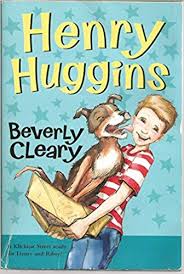Family Stories
Listen to the Recess! Clip
| Author | Rita Smith |
| Air Date | 5/24/2005 |

Family Stories Transcript
In Good Wives: A Story for Girls, Louisa May Alcott has Jo March declare “I do think that families are the most beautiful things in all the world,” and stories such as Good Wives and Little Women, in which the action and interactions center around the family, comprise an important segment of American children’s literature.
Family stories emphasize ordinary events and the details of everyday life rather than adventure or action and focus on human relationships both in and out of the family unit and on the many problems which can grow out of those relationships. Alcott’s Little Women, published in 1868, was about an entirely ordinary family, one that wasn’t perfect or overly moral. Their life was full and joyous, but not incredibly exciting nor was it tedious and dull. The success of Little Women set the stage for other writers of realistic domestic fiction, like Susan Coolidge, who published What Katy Did in 1872, and Margaret Sidney with her lovable crew of Pepper children who populated a series of books beginning with The Five Little Peppers and How they Grew published in 1881.
Family stories up through the mid 20th century generally focused on strong, happy families who met challenges with courage and love: Beverly Cleary’s Henry Huggins, for example, or the Little House books by Laura Ingalls Wilder or Eleanor Estes’ books about the Moffat family. Beginning in the 1960’s the families represented became more racially and ethnically diverse. Uchida Yoshiko’s Journey to Topaz, published in 1970, for example, tells the story of a Japanese American family’s internment in a relocation camp during World War II and Mildred Taylor’s Roll of Thunder, Hear My Cry, published in 1976, featured an African American family standing together against racism in rural Mississippi of the 1930’s. There were more stories with lower class or working class backgrounds and fewer stories with wise supportive parents. In fact, parents become part of the problem for the child characters in more recent family stories which deal with emotionally distant mothers or fathers, step-parents, drug abuse, alcoholism, and divorce. Family stories appeal to children who want to read about children like themselves and they can also help acquaint children with someone whose time, ethnicity, or family situation is different from their own. Although the family structures and the specific challenges families and children face have changed through the years and although the protagonists of modern family stories may not agree with Jo that “families are the most beautiful things in all the world,” the stories, old and new, reflect scenes from everyday American society and speak to children of the universal joys and struggles of family life.
Sources:
Avery, Gillian. “The Family Story” in International Companion Encyclopedia of Children’s Literature. Peter Hunt, Ed. New York: Routledge, 1996, p. 338-347.
Ellis, Anne W. The Family Story in the 1960’s, Hamden, Connecticut: Archon Books, 1970.
Greenlee, Adele. “Family Stories” in The Continuum Encyclopedia of Children’s Literature, Bernice E. Bullinan and Diane G. Person, Eds. New York: Continuum, 2003, p. 273-275.